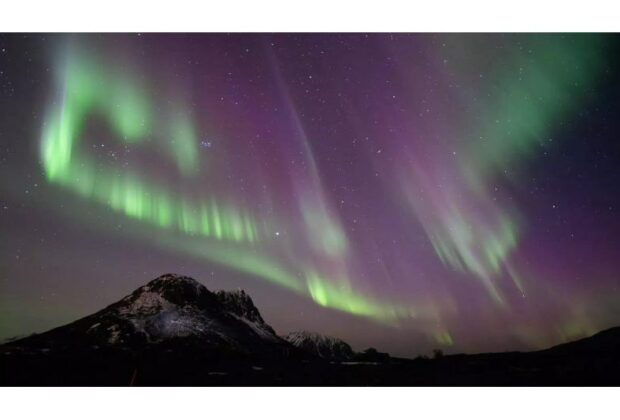An eruption of solar material that is scheduled to travel through Earth’s atmosphere on Tuesday night was caused by a solar flare that burst from the sun on Sunday. This could result in another display of the Northern Lights.
On a five-point scale, the NOAA Space Weather Prediction Center has issued a level G2 geomagnetic storm watch for Tuesday night.
People in the northern U.S., including those in Washington, Idaho, Montana, the Dakotas, and the Upper Midwest, may be in for a good show overnight, even though this storm won’t be nearly as intense as the May 10 extreme solar event that brought the aurora as far south as the Gulf of Mexico.
Bright displays of the Northern Lights typically occur a few days after solar flares or coronal mass ejections. These bring with them a torrent of electrons that interact with nitrogen and oxygen in the magnetic field that envelops our globe.
The show is best seen between 11 p.m. and 3 a.m. local time, however, it can fluctuate in intensity depending on how the solar particles interact with Earth’s magnetic field. Locate a northern horizon that is unobstructed by city lights.
This week’s nearly full moon will make for less ideal viewing circumstances by casting extra moonlight into the sky, but a strong enough show will still be able to cut through the extra light.
Of course, for a nice presentation, you also need to keep the clouds away, and Mother Nature is helping with that.
With the exception of places affected by wildfire smoke, viewing conditions appear favorable throughout the Northwest, the Dakotas, Minneapolis, and the Northeast. The exception, which is probably cloud cover, is the Upper Great Lakes.








